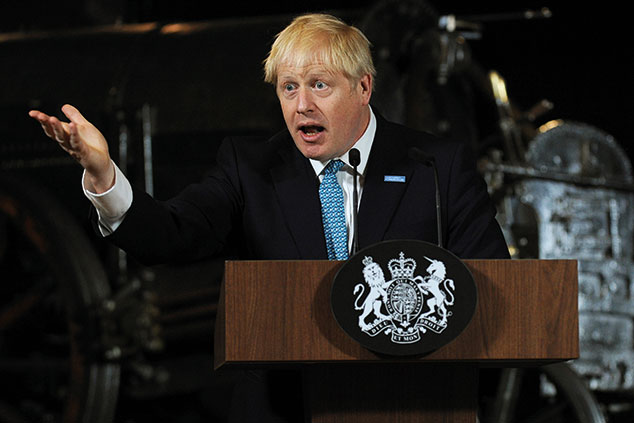
Since Boris Johnson became prime minister and promised that we would leave the EU with or without a deal in 90 days’ time, the pound has fallen around 3% against the US dollar. This, in part, represents an information vacuum.
Right now pretty much anything could happen in the UK. A no-deal Brexit is possible (though, we still think, unlikely). An Article 50 revocation is possible (albeit very unlikely). A revised deal is possible, as is some kind of fudged interim agreement. So is a no-confidence vote and a new election.
Sterling is discounting this complete lack of certainty – and into the vacuum both attributing a higher-than-reasonable probability to no-deal and assuming that not having a full deal in place on departure will cause full-on disaster (which it probably won’t). With that in mind you might expect the pound to bounce as we get some clarity over the next few weeks.
However, this isn’t just about Brexit. It’s about central-bank behaviour. Sterling’s weakness represents a loss of faith in the ability (or intention) of the Bank of England to raise interest rates. With wages rising faster than inflation rates should be on the up. But the market knows that is very unlikely to happen anytime soon. As Marcus Ashworth asks on bloomberg.com, “how can a sensible central bank remain hawkish three months ahead of a possible disorderly break from the country’s largest trading partner?”
Good question. But he might just as well have asked “how can any central bank remain hawkish at all given what other central banks are doing?” All are busy doubling down on loose monetary policies. Yields in the UK are negative in real terms (-2.7% over ten years).
But this is also the case in much of the rest of the developed world (you can take out a ten-year mortgage on a negative yield in Denmark!). Look to the EU where ten-year real interest rates are already -1.4%, yet second-quarter GDP growth has just come in at a mere 0.2%. There is talk of another “whatever it takes” bazooka on the way from the European Central Bank in the autumn, something that will, as it is supposed to, weaken the euro again, particularly if it involves printing money to buy equities.
You will read that last sentence, understand that a central bank printing money to buy private assets (equities) represents stunningly extreme policy action and wonder if the world has gone monetary-mad.
It has. But on the plus side, while British travellers may be finding their summer holidays in Europe expensive this year, relative to the euro at least, the pound might have begun to look rather better by the time skiing season rolls around.
To discuss all this and more, come to Edinburgh where Dominic Frisby and I are hosting a panel show at Panmure House (Adam Smith’s last home) for most of August. Dominic is hosting from this Saturday and I’m on from 17 August. Buy tickets here. We hope to see you there!